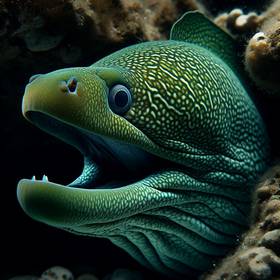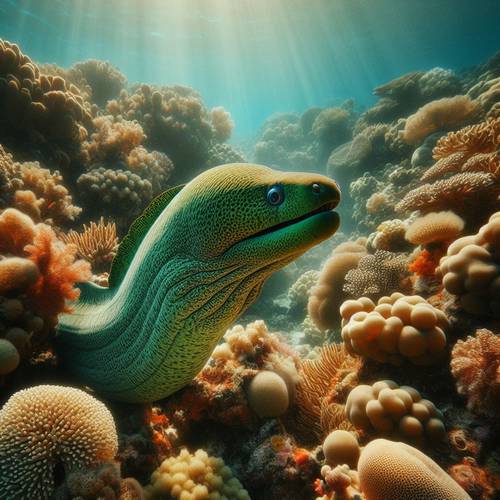Are green moray eels venomous?

Yes, green moray eels are indeed venomous. However, their venom is not usually fatal to humans unless an individual has an allergic reaction. These eels possess venomous glands in their jaws, which they use for defense and capturing prey. While encounters with humans are rare, it's important to exercise caution and respect when interacting with marine life.
Are green moray eels friendly?
This species are not inherently friendly, as they are solitary and territorial creatures. However, they are not typically aggressive towards humans unless provoked or threatened. With proper caution and respect for their space, divers and snorkelers can often observe green moray eels without incident, appreciating their beauty and behavior from a safe distance.
Can you have a green moray eel as a pet?
While some individuals may attempt to keep green moray eels as pets, it's crucial to note that they require specialized care and large tank setups mimicking their natural habitat. These eels can grow quite large and have specific dietary and environmental needs, making them challenging pets for most aquarium hobbyists. Additionally, their potential aggression and handling difficulties further discourage their suitability as pets.
What happens if a green moray eel bites you?
If a green moray eel were to bite you, it could potentially cause painful puncture wounds due to their sharp teeth and powerful jaw muscles. Additionally, their saliva contains bacteria that may lead to infections if not treated promptly. It's crucial to seek medical attention immediately if bitten by a green moray eel to prevent complications and ensure proper wound care.
Do moray eels like humans?
Moray eels do not have a preference for humans as they primarily interact with their environment based on survival instincts and natural behaviors. While they may display curiosity or aggression if provoked or threatened, their interactions with humans are generally incidental rather than based on any particular liking or dislike.
Are green moray eels aggressive to humans?
Moray eels are generally not aggressive toward humans unless provoked or threatened. They prefer to avoid interactions with divers and snorkelers and will often retreat into crevices or holes in the reef when approached. However, caution is still advised as any wild animal can react unpredictably if they feel threatened or cornered.

